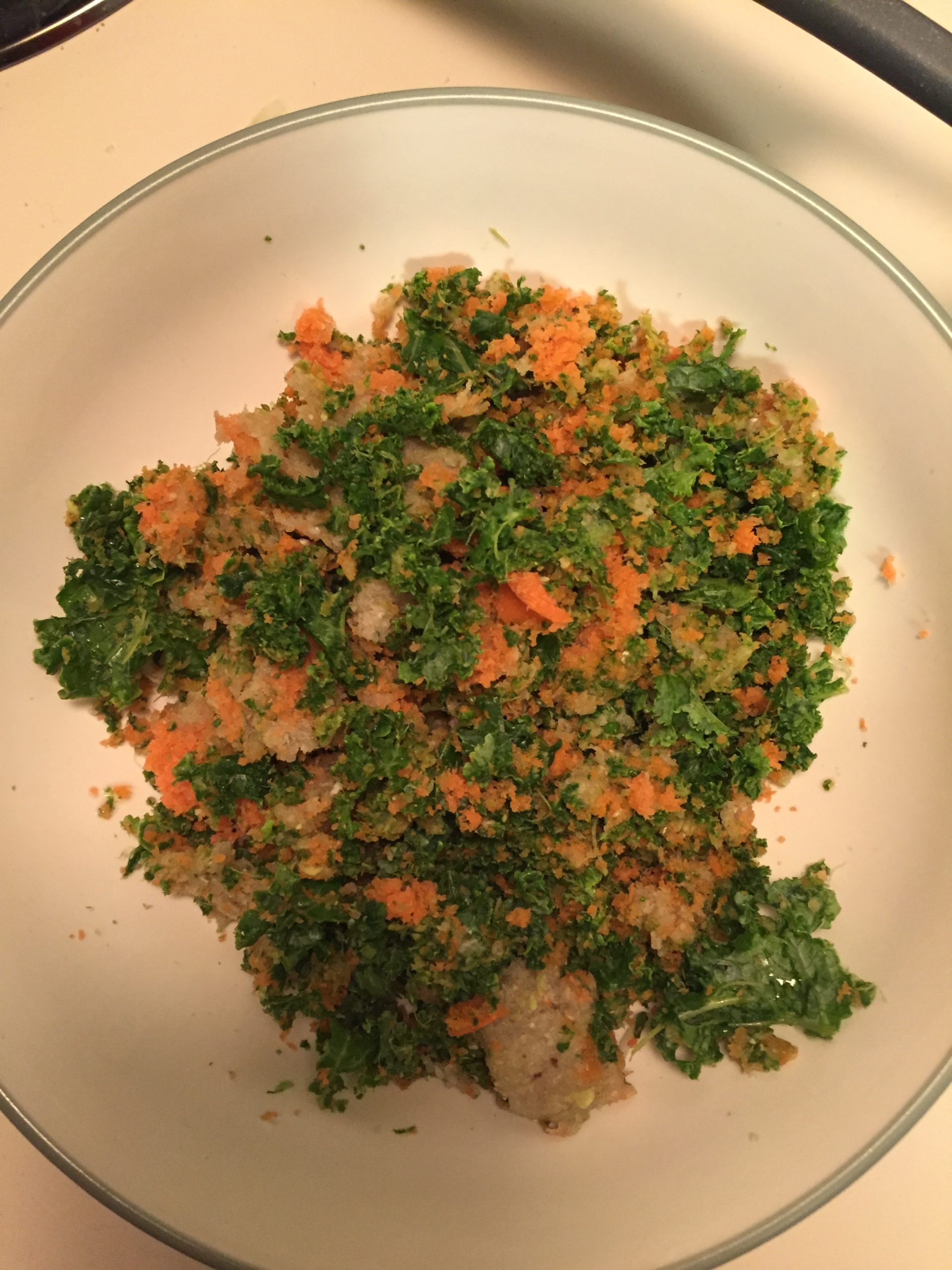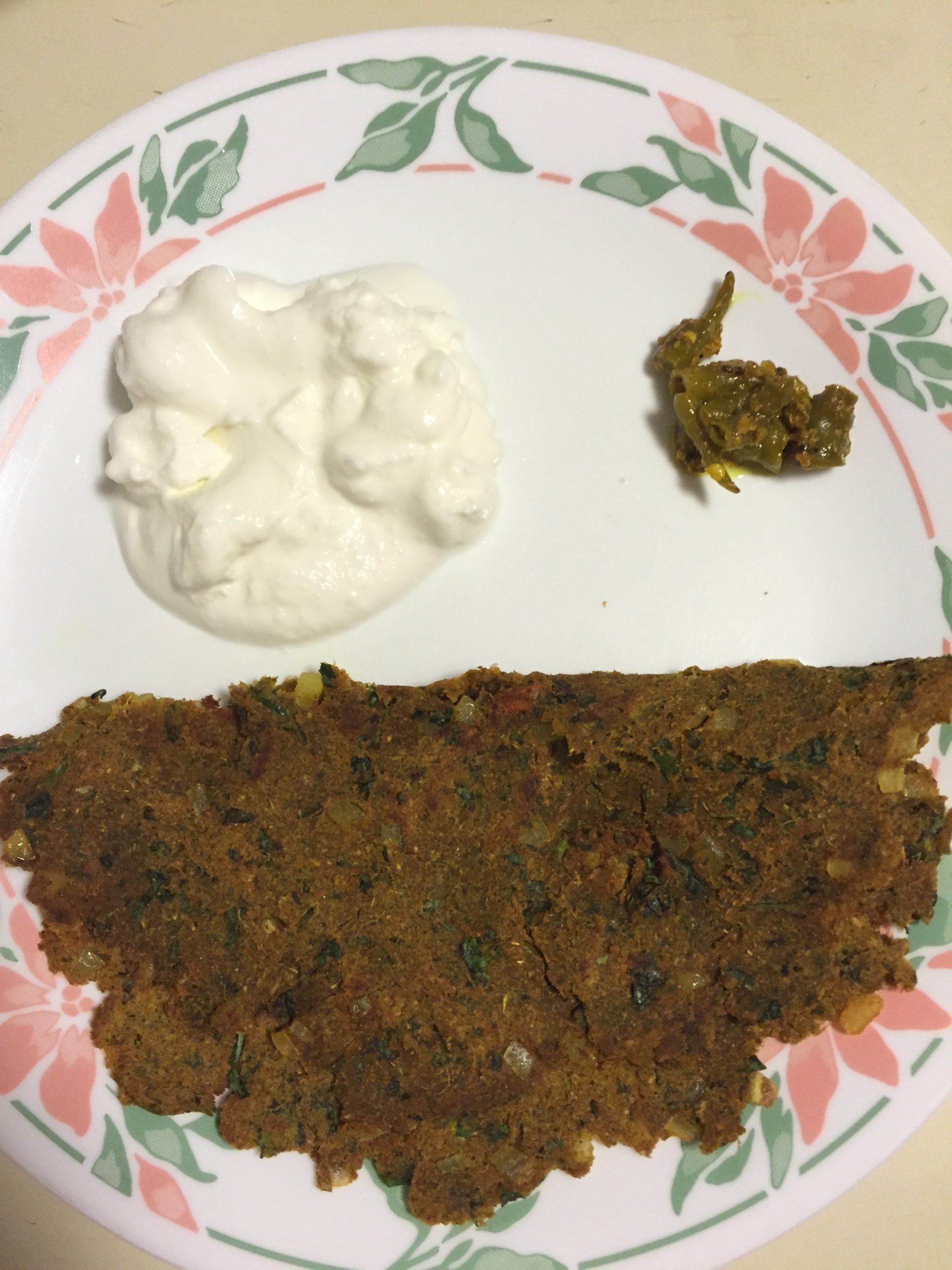Thalipeeth
Maharashtrian style pancake with multi-grain flour (Bhajani) and vegetables.
This is the best quick-fix healthy, delicious snack ever. It is my go-to dish when I don’t have time, am craving something crispy and savory and I want to use a leftover vegetable or dal or even my fruit juice waste pulp (for the lack of a better term)
I started juicing for Lunch some time last year and stick to it as much as I can. I will juice anything from Dudhi to butternut quash, kale, carrots, pretty much any fruit and ginger and herbs for flavor. Below is a picture of the juicer I use, it was a gift from a lovely friend. Its a really good quality Breville juicer that squeezes a good amount of juice out leaving behind relatively dry pulp.

I always feel bad to throw away the pulp. Thalipeeth is the best way to make use of it! So, when I juice, I juice my vegetables first and collect the pulp in a separate bag (the juice pulp in the picture contains dudhi, carrots and kale) and then juice my sweet fruits (since I don’t want the sweet pulp in my thalipeeth)
Bhajani is a flour of mixed grains, lentils and spices (toasted and ground “bhaj” in the word bhajani stands for toasting/ roasting. Usually bhajani is made with rice, wheat, millet, sorghum, mix of lentils and coriander seeds; all toasted and finely ground. You can buy it readymade. My mom usually makes this at home without wheat (gluten free for me!) and sends me some. Another version of this is the upwas bhajani which can also be used to make another kind of thalipeeth)
So using this as my base here’s what I needed for this delicious thalipeeth: makes two medium sized thalipeeths
1 cup of the vegetable juice pulp (trust me this can have anything and you will not even know. You can also use any leftover cooked vegetables and or dal/ steamed sprouts, etc into this – make sure its mashed up/ grated)
1/2 cup bhajani (ya, only! – You can also use a mix of different flours you have at hand, if you dont have bhajani – rice, millet, sorghum, chana (or any other dal) flour, atta, soybeans, etc, if you do that, add a tsp of coriander powder – the flavor will be different as the flour will not have the roasted taste that bhajani does, but it will still be tasty)
seasonings: salt, red chilli powder, turmeric powder – about 1/2 tsp of each
1 small onion finely chopped
a handful of cilantro leaves- finely chopped
Oil for frying
optional- a pinch of ajwain seeds (carom seeds – good for digestion) and/ or sesame seeds
Procedure:
- In a bowl mix the vegetable juice pulp, the bhajani flour, all the spices and oinion and cilantro
- add a teaspoon of oil to this mixture and mix
- add water as needed to make a very soft dough. Divide the dough in fist sized balls

- Apply oil on a cold skillet and flatten a dough ball on it with you hand
- Make sure you spread it flat with even thickness, do not flatten too thin, as theres more beggies than flour to bind in this recipe, and this could break the thalipeeth when flipping if its too thin. I would say I made mine about 0.5 cm thick (maybe 4 mm 😛 )

- when its flattened out completely, make 5 holes (or wells) as shown in the picture above and add oil to these wells.

- Cover and cook on medium heat till you hear it sizzle. Remove the lid and check the other side – It should have crispy golden-brown patches on the surface touching the skillet and the top should be steaming and look almost cooked.
- Gently flip over and cook the other side, without the lid – Make it as crispy as you want, decide how much oil you want to add to your thalipeeth

- Serve hot with Yougurt ot fresh butter, and some spicy pickle if you like 🙂
